In today's highly competitive market, brands are continuously searching for innovative ways to stand out from the crowd and make a lasting impact on their target audiences. One such strategy that has gained significant attention in recent years is Experiential Marketing. By creating immersive, memorable experiences, marketers can connect with their audience on a deeper level, driving brand engagement, awareness, and loyalty. As a leading US-based advertising agency, we've seen firsthand the transformative impact of experiential marketing on boosting brand visibility and fostering lasting customer relationships.
In this blog post, we will explore the ins and outs of experiential marketing and provide you with valuable tips and strategies for crafting compelling, immersive brand experiences that resonate with your target audience. From understanding the benefits of this marketing approach to creating memorable experiences and measuring success, this post will serve as a comprehensive guide for marketers looking to harness the true power of experiential marketing.
Understand Your Target Audience
The foundation of any successful experiential marketing campaign is a deep understanding of your target audience. By knowing their preferences, motivations, and pain points, you can create experiences that resonate with them and foster genuine connections. To achieve this, conduct a comprehensive audience analysis, including surveys, focus groups, and social media research. By gaining insights into your audience's needs and desires, you can design impactful experiences that leave lasting impressions.Create Memorable and Share-worthy Experiences
The key to a successful experiential marketing campaign is creating immersive, share-worthy experiences that captivate your audience. When designing your event or activation, consider the following elements:1. Storytelling: Craft a compelling narrative that evokes emotion and conveys your brand's values and personality. This will help build an emotional connection with your audience and make your experience more memorable.
2. Immersion: Engage your audience's senses through visual, auditory, and tactile elements. This sensory engagement encourages a deeper connection and understanding of your brand.
3. Surprise and Delight: Incorporate unexpected, delightful elements into your experience to create excitement and foster positive associations with your brand.
4. Social Media Integration: Leverage social media platforms to amplify your experiential marketing campaign. Encourage attendees to share their experiences on social media using branded hashtags, photo opportunities, and interactive content.
Collaborate with Industry Influencers and Partners
Partnering with industry influencers and organizations can amplify your experiential marketing campaign's reach and impact. By working with key opinion leaders or complementary brands, you can tap into their audience, expand your reach, and generate buzz surrounding your experience. Consider collaborating with influencers who align with your brand values and can authentically promote your event or activation.Measure Your Success
Measuring and tracking the success of your experiential marketing campaign is essential for understanding its effectiveness and informing future strategies. Establish KPIs (Key Performance Indicators) to evaluate different aspects of your campaign, including engagement, brand awareness, lead generation, and sales. Use tools such Kinetic319’s KiQ which aggregates web analytics, social media metrics, and attendee feedback to gain insights into your campaign's performance.Some KPIs to track include:
1. Attendance and foot traffic
2. Social media engagement (likes, shares, comments)
3. Conversion rates (newsletter sign-ups, product sales)
4. Media coverage and PR value
5. Post-event surveys and qualitative feedback
By monitoring these metrics, you can identify areas of success and improvement, allowing you to refine your experiential marketing strategies moving forward.
Leverage Emerging Technologies
Technology plays a critical role in enhancing experiential marketing campaigns and delivering immersive experiences. As a marketer, you should stay abreast of the latest technological innovations and use them to elevate your campaign. Some examples include:1. Virtual and Augmented Reality: Leverage VR and AR technologies to create immersive, engaging experiences that transport your audience to different worlds or enhance their interactions with your brand.
2. Interactive Displays: Incorporate touch screens, gesture controls, and digital interfaces that enable your audience to engage with your content in unique, dynamic ways.
3. Live streaming: Extend your campaign's reach by livestreaming your event or activation, allowing audiences who cannot attend in person to participate virtually.

